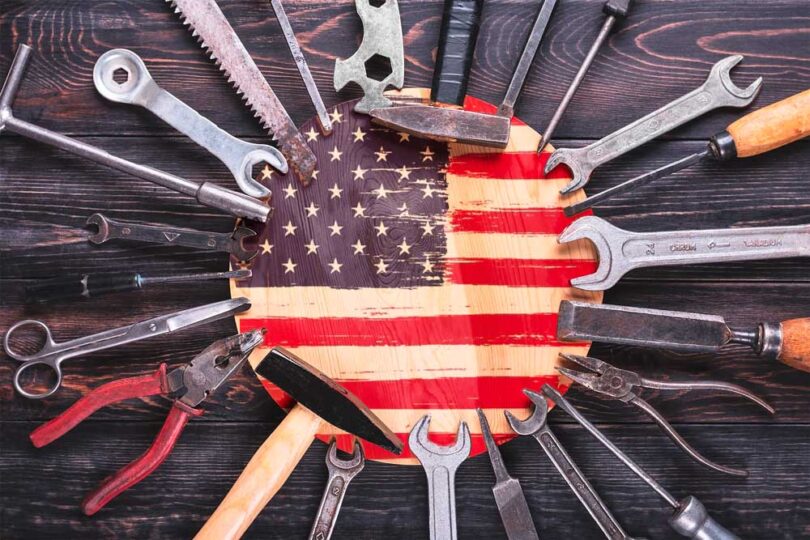Labor Day, a holiday celebrated in the United States on the first Monday of September, has become synonymous with the end of summer, barbecues, and retail sales. However, the origins of this day are rooted in the labor movement, a part of American history that championed the rights and well-being of the working class. The day is a tribute to American workers' social and economic contributions.
From Unrest to Recognition
Labor Day traces its roots back to the 19th century, a period marked by industrialization and the rise of factories. Workers, including children as young as five, were often subjected to extremely harsh conditions, working 12-hour days, seven days a week. Safety measures were practically nonexistent, making the workplace hazardous.
The first Labor Day celebration is a subject of some debate. Some historians attribute the idea to Peter J. McGuire, the co-founder of the American Federation of Labor, while others credit Matthew Maguire, a machinist. Regardless of who initiated the idea, the first Labor Day parade took place in New York City on September 5, 1882. Ten thousand workers took unpaid time off to march from City Hall to Union Square, advocating for better working conditions and an eight-hour workday.
Legal Recognition
The concept of Labor Day caught on rapidly. Oregon was the first state to make it a public holiday in 1887. Other states followed suit, but it wasn’t until 1894 that President Grover Cleveland signed a law making Labor Day a national holiday following the Pullman Strike. The strike involved Pullman Palace Car workers protesting wage cuts and the firing of union representatives. The government intervened, and the strike led to violence and the deaths of more than a dozen workers. The federal recognition of Labor Day was, in part, an attempt to reconcile with the American labor force.
The Labor Movement
Labor Day owes its existence to the labor movement, which fought for workers’ rights and better conditions. Key milestones include the Fair Labor Standards Act of 1938, which set the minimum wage and maximum working hours, and the Wagner Act of 1935, which protected workers’ rights to join unions.
Labor Day Today
Over the years, the significance of Labor Day has evolved. While it still honors the American labor force, it also marks the unofficial end of summer, with many people enjoying long weekends, family gatherings, and various recreational activities. Schools often restart after this holiday, and many sporting events like the U.S. Open Tennis Championships and college football kick off around this time.
International Perspectives
Labor Day, or similar holidays honoring workers, is not unique to the United States. Many other countries celebrate International Workers' Day, commonly known as May Day, on May 1. The focus of these celebrations varies from country to country, but the core idea remains the same: recognizing the value and dignity of labor.
Controversies and Debates
Though largely a celebration, Labor Day has its share of controversies. For example, the retail industry often uses the holiday for large-scale sales events, which means many retail workers don’t get the day off. This has led to debates about the true essence of the holiday and whether its original meaning is being overshadowed.
Labor Day has a rich history that stretches back to the 19th century. Born out of a desperate need for reform in labor laws and conditions, it now stands as a tribute to the hard work and sacrifices of the American labor force. As you enjoy your Labor Day weekend, it might be worth remembering the struggles and victories that made this holiday possible. Whether you see it as a day of rest, a time for family, or an opportunity for end-of-summer fun, the day has deep roots that are intertwined with the fabric of American society.
With over a century of history, Labor Day continues to be an important national holiday, offering not just a day off work but also a moment to reflect on the social and economic achievements of American workers. It serves as a yearly reminder of how far the labor movement has come while also highlighting the work that still needs to be done.
If you're interested in learning more about the history and significance of Labor Day, the labor movement, or workers' rights, here are some good books that delve deeper into these topics:
“There Is Power in a Union: The Epic Story of Labor in America” by Philip Dray
This book is a comprehensive look at the American labor movement from its earliest days to modern times. It includes information about the inception of Labor Day and its significance within the broader context of labor history.
“From the Folks Who Brought You the Weekend: A Short, Illustrated History of Labor in the United States” by Priscilla Murolo and A.B. Chitty
This illustrated history offers an easy-to-follow timeline of labor in the United States, including the creation of Labor Day. The book is an excellent resource for those looking to understand the complex historical events that led to modern labor rights.
“Which Side Are You On?: Trying to Be for Labor When It's Flat on Its Back” by Thomas Geoghegan
This work offers a first-person account of the labor movement and includes historical events that have shaped labor rights and practices, including Labor Day. Written by a labor lawyer, it gives an inside look at the challenges and triumphs of the movement.
These books offer various perspectives on labor history, social struggles, and the fight for workers' rights. Happy Reading!





